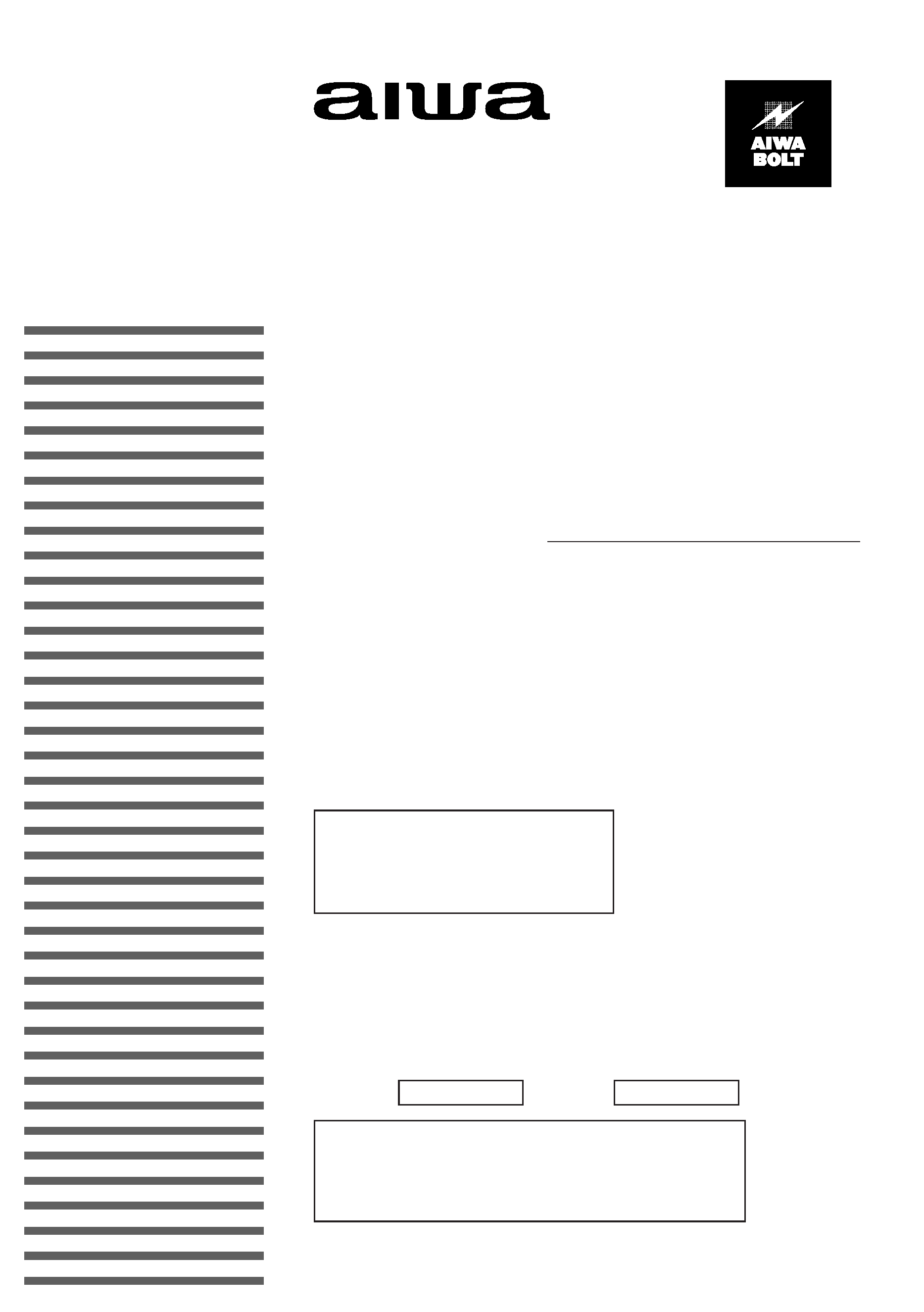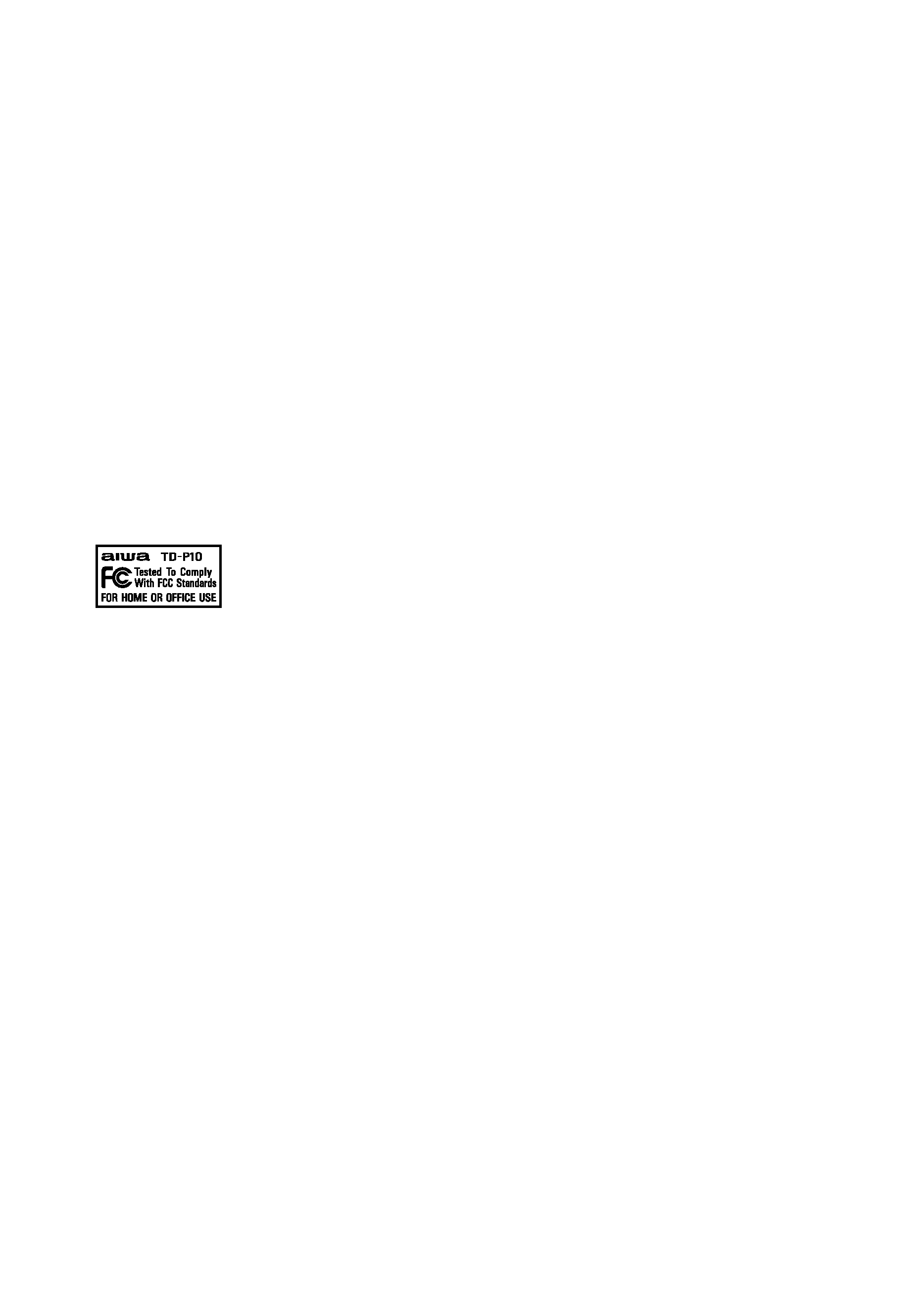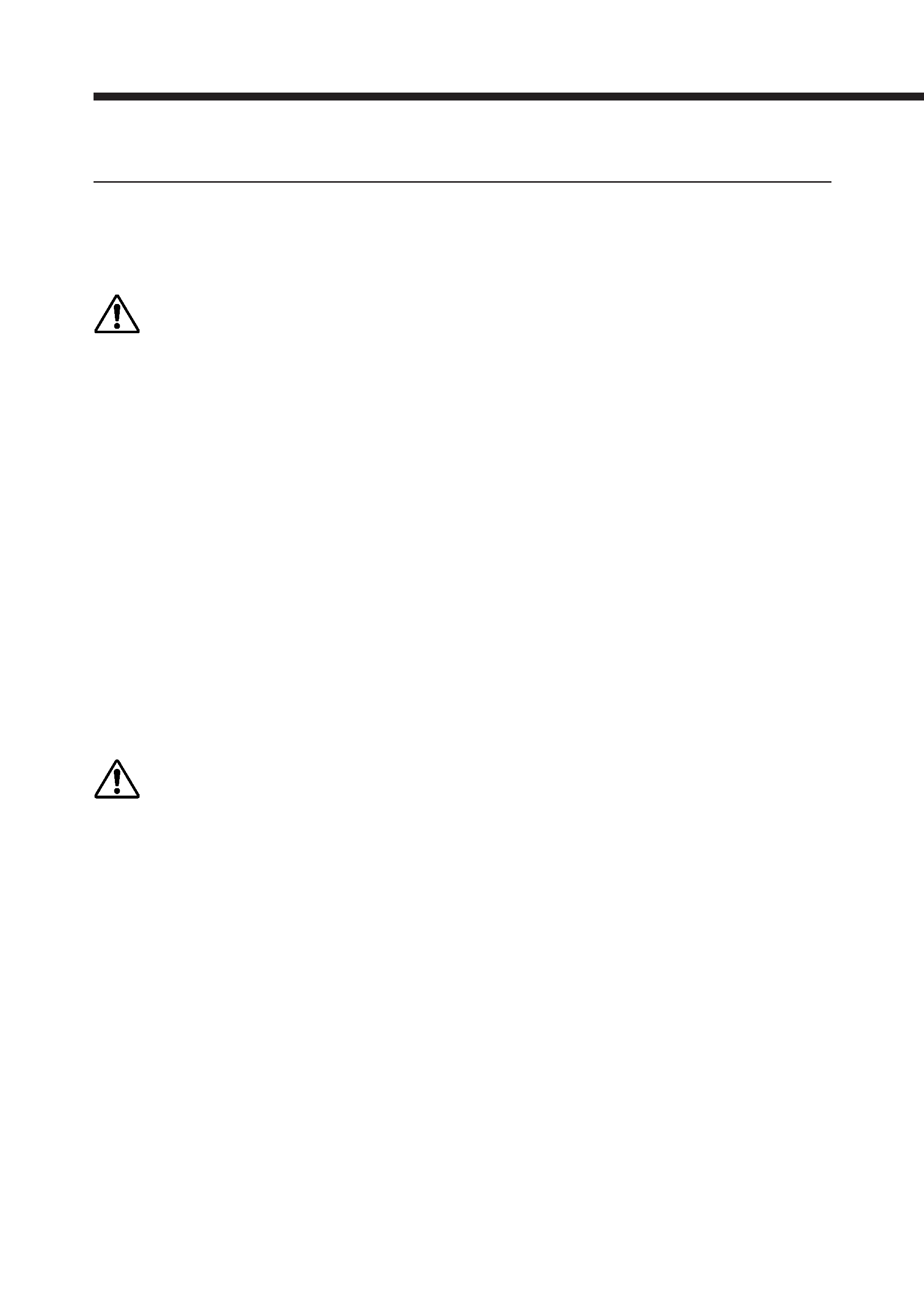
TD-P10 U
TAPE DRIVE
OWNER'S RECORD
For your convenience, record the model number and
serial number (you will find them on the bottom of your
set) in the space provided below. Please refer to them
when you contact your AIWA dealer in case of difficulty.
Model No.
Serial No.
TD-P10
Hardware Installation Manual
To Call Technical Support
(800) 920-2673
8:00AM to 5:00PM pacific time,
Monday through Friday
WARNING
TO REDUCE THE RISK OF FIRE OR ELECTRIC
SHOCK, DO NOT EXPOSE THIS APPLIANCE TO
RAIN OR MOISTURE.
Hardware Requirements
Use this unit with a computer whose parallel port supports
the EPP mode or the ECP mode.

EMI/EMC
s FCC Part 15B, Class B
FCC NOTICE
This equipment has been tested and found to comply with the limits for a Class B digital
device, pursuant to Part 15 of the FCC Rules.These limits are designed to provide
reasonable protection against harmful interference in a residential installation. This
equipment generates, uses and can radiate radio frequency energy and, if not installed
and used in accordance with the instructions, may cause harmful interference to radio
communications.
However, there is no guarantee that interference will not occur in a particular installation.
If this equipment does cause harmful interference to radio or television reception, which
can be determined by turning the equipment off and on, the user is encouraged to try to
correct the interference by one or more of the following measures:
.... Reorient or relocate the receiving antenna.
.... Increase the separation between the equipment and receiver.
.... Connect the equipment into an outlet on a circuit different from that to which the
receiver is connected.
.... Consult the dealer or an experienced radio/TV technician for help.
Any changes or modifications not expressly approved by the manufacturer could void
the user's authority to operate the equipment.
Caution
Shielded I/O cables must be used when operating this equipment.
A shielded power cable must be used when operating this equipment.
s C108.8-M1983, Class B
Industry Canada Compliance statement:
This equipment does not exceed class B limits for radio noise emissions for digital
apparatus set out in the Radio Interference Regulation of the Industry Canada. Operation
in a residential area may cause unacceptable interference to radio and TV reception
requiring the owner or operator to take whatever steps are necessary to correct the
interference.
Avis de conformité aux normes du ministère de l'Industrie du Canada:
Cet équipement ne dépasse pas les limites de Classe B d'émission de bruits
radioélectriques pour les appareils numériques telles que perscrites par le Règlement
sur le brouillage radioélectrique établi par le ministère de l'Industrie Canada.
L'exploitation faite en milieu résidentiel peut entraîner le brouillage des réceptions radio
et télé, ce qui obligerait le propriétaire ou l'opérateur à prendre les dispositions
nécessaires pour en éliminer les causes.
Safety
s UL 1950 IEC 950 A1, +A2, +A3
s cUL-22.2-950 A1, +A2, +A3

3
Important Notes on Operation .................................................................. 4
Overview .....................................................................................................7
Tape Cartridges ................................................................................................... 7
System Prerequisites ........................................................................................... 9
Preparation ............................................................................................... 10
Checking the Contents of the Package .............................................................. 10
Names and Function of Parts ............................................................................ 11
Setting the Tape Drive ....................................................................................... 12
Connection ............................................................................................... 13
Drive Operation and Maintenance .......................................................... 15
Turning the Power On ........................................................................................ 15
Write Protection ................................................................................................. 16
Inserting and Removing Tapes .......................................................................... 16
Cleaning the Read/Write Head .......................................................................... 18
Installation of the Backup Software ....................................................... 20
Troubleshooting ....................................................................................... 23
Technical Support .................................................................................... 25
Specifications ........................................................................................... 27
AIWA BOLT is a trademark of Aiwa Co., Ltd.
QIC-EXtra is a trademark of Verbatim Corporation.
TRAVANTM is a trademark of Imation Enterprises Corporation.
QIC-WIDE is a trademark of SONY Corporation.
Windows, Windows 95, Windows 98 and Windows NT are trademarks of Microsoft
Corporation.
Pentium is a registered trademark of Intel Corporation.
All other names and product names are the property of their respective owners.
Table of Contents

4
Limitation of liability
Under no circumstances can Aiwa Co., Ltd. accept liability for incidental or
consequential damage to data recorded on tapes due to malfunctions or improper
operation of this unit.
Warning
· Do not attempt to disassemble or modify this unit. Doing so can result in
malfunctions or accidents.
· Do not insert your fingers or other parts of the body into the tape insertion slot.
Doing so can result in injury. Be especially careful to keep the hands of small
children away from this unit. Do not insert foreign objects into this unit. Doing so
can result in malfunctions.
· While this unit is operating, the bottom of the tape cartridge becomes hot. Be
careful not to touch it, as this can result in burns.
· The tape drive is fitted with a cooling fan to prevent the internal temperature
becoming excessive. Ensure that the unit is operated at a suitable spacing from
walls and other obstructions, so that there is a clear passage of air to the fan.
Operating the unit when the fan is obstructed can lead to malfunctions.
· Take great care when carrying the drive not to subject it to unreasonable shock.
Even if there is no external sign of damage, the internal mechanism could be
damaged.
Caution
· Before beginning the job of installing this unit, disconnect the computer and any
connected peripherals from the AC power supply. Carrying out the job while the
computer is still connected to the power supply can result in electric shock.
Before beginning the installation, read carefully the instructions with this unit, and
observe all warnings and cautions.
· Do not use this unit when it is affected by condensation: this can result in damage
to the read/write head, or jammed or broken tapes. The same problems can result
when there is condensation inside a tape cartridge. After moving a tape cartridge
from a cold to a warm place, wait for two or three hours before inserting it in this
unit.
Important Notes on Operation

5
Turning the unit on and off
After turning off the power, be sure to wait for at least 10 seconds
before turning the unit on again; otherwise the unit may malfunction
and data read/write operation may not be correctly effectuated.
Read/write head cleaning
When cleaning the read/write head, be sure to turn the unit off.
Never power on this unit when cleaning the read/write head with a lint-free cotton
swab moistened with more than 90% isopropyl alcohol, until the read/write head is
dry.
After cleaning, wait for at least 10 minutes for the read/write head to dry completely
before powering on. Failure to do so will damage the head electrically.
Cartridge retensioning
A retensioning pass (running the tape from end to end) is strongly recommended
when (a) the cartridge is first loaded into a drive, (b) the cartridge is exposed to
temperature changes of 16°C or more, or (c) one section of tape has been used
excessively in a single operating period.
Operating conditions
To keep this unit working properly, follow these guidelines.
· Do not operate this unit in a dusty environment.
· Clean the read/write head at the recommended intervals.
(See page 18.)
· Do not leave a tape cartridge loaded when the computer system is not in use.
· Do not remove the tape cartridge when the drive is being accessed (when the
ACCESS indicator is lit steadily or blinks).
· Keep tape cartridges away from magnetic fields, sunlight, extreme humidity and
extreme temperatures.
· Store tape cartridges in their protective cases.
· Do not use this unit where it may be subject to vibration or shock.
